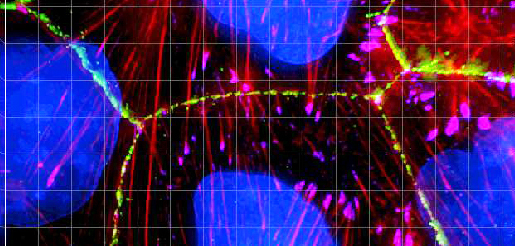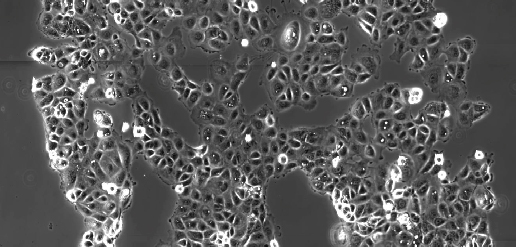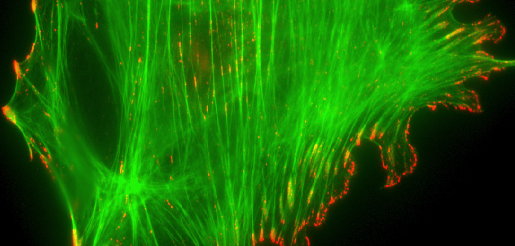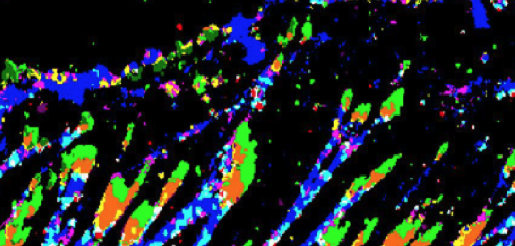
Caco-2 cells labeled for tight junction molecule cingulin (green), actin (red), vinculin (pink) and DNA (blue).

Epithelial cells growing on a patterned adhesive surface with the shape of the Weizmann Institute tree.

Desmosomes in mouse tongue epithelium (by transmission electron microscope).

Porcine aortic endothelial cell, double-labeled for actin (green) and phospho-tyrosine (red).

“Molecular composition map” of focal adhesions and stress fibers.

Myeloma cancer cell responding to shear flow (by scanning electron microscope).
You are here
Screening Projects ››Multiparametric analysis of focal adhesion formation by RNAi-mediated gene knockdown
Background
Cell adhesion to the ECM is mediated via adhesion receptors, mainly integrins, which are involved directly or indirectly in multiple processes including cell migration, morphogenesis, differentiation, and survival. When cells bind to an external surface, transmembrane multiprotein complexes such as focal adhesions (FAs) are formed. These adhesions consist of elaborate networks of multiprotein complexes, cytoskeletal components, signaling molecules, and diverse adaptor proteins. To date, over 200 molecules, collectively known as the “adhesome”, have been shown to reside, constitutively or transiently, in FAs and related integrin-mediated contacts.
Rationale
Understanding this multicomponent and multifunctional system constitutes a major experimental challenge for researchers interested in structure–function relationships at adhesion sites. A powerful approach for addressing this challenge involves the application of the siRNA technique, which enables the specific perturbation of expression of selected genes.
Methods
We screened three siRNA libraries targeting genes encoding protein and lipid kinases and phosphatases, as well as a library targeting many of the known or suspected migration- and adhesion-related (MAR) genes. High-resolution light microscopy, together with quantitative image analysis, was used to assess the effects of this treatment on the morphology of FAs, on their subcellular distribution, and on cell spreading and elongation. To analyze the results of the screen, we took a systems biology approach, creating a multiparametric dataset of all the siRNAs that were found to induce significant changes in at least one of the FA or cell morphology features measured. This approach enabled us to analyze multiple effects with diverse strength.
Results
Multiparametric image analysis of control and of siRNA-treated cells revealed major correlations between distinct morphological FA features. Clustering analysis identified different gene families whose perturbation induced similar effects, some of which uncoupled the interfeature correlations. A model for the molecular hierarchy of FA formation was proposed and tested by dynamic analysis of FA formation and turnover.
Conclusions
This study provides a comprehensive information resource on the molecular regulation of multiple cell adhesion features, and sheds light on signaling mechanisms regulating the formation of integrin adhesions.
Contact person: Sabina Winograd-Katz
Further Reading
Winograd-Katz, SE; Itzkovitz, S; Kam, Z; Geiger, B (2009).
Multiparametric analysis of focal adhesion formation by RNAi-mediated gene knockdown.
Journal of Cell Biology.
186
(3):423-436.


- Scientific Activities
- Publications
- Group Members
- Collaborations
- Screening Projects
- A cell-based screening system for discovery of novel proteasome inhibitors
- Fibroblast polarization is a matrix-rigidity-dependent process controlled by focal adhesion mechanosensing
- Identification of Novel Pro-Migratory, Cancer-Associated Genes Using Quantitative, Microscopy-Based Screening
- Multiparametric analysis of focal adhesion formation by RNAi-mediated gene knockdown
- Screening for genes involved in collective cell migration
- Software
- Galleries
- Research
